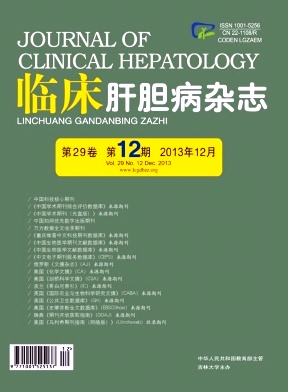|
[1]THOMAS GR, FORBES JR, ROBERTS EA, et al.The Wilson disease gene:spectrum of mutations and their consequences[J].Nat Genet, 1995, 9 (2) :210-217.
|
|
[2]European Association for the Study of the Liver.EASL clinical practice guidelines:Wilson’s disease[J].J Hepatol, 2012, 56 (3) :671-685.
|
|
[3]ROBERTS EA, SCHILSKY MI.Diagnosis and treatment of Wilson disease:an update[J].Hepatology, 2008, 47 (6) :2089-2111.
|
|
[4]ROBERTS EA.“Not so rare”Wilson disease[J].Clin Res Hepatol Gastroenterol, 2013, 37 (3) :219-221.
|
|
[5]PRASHANTH LK, TALY AB, SINHA S, et al.Wilson’s disease:diagnostic errors and clinical implications[J].J Neurol Neurosurg Psychiatry, 2004, 75 (6) :907-909.
|
|
[6]WALSHE JM, YEALLAND M.Not Wilson’s disease:a review of misdiagnosed cases[J].QJM, 1995, 88 (1) :55-59.
|
|
[7]ALA A, BORJIGIN J, ROCHWARGER A, et al.Wilson disease in septuagenarian siblings:raising the bar for diagnosis[J].Hepatology, 2005, 41 (3) :668-670.
|
|
[8]FERENCI P, CZTONKOWSKA A, MERLE U, et al.Late-onset Wilson’s disease[J].Gastroenterology, 2007, 132 (4) :1294-1298.
|
|
[9]STEINDL P, FERENCI P, DIENES HP, et al.Wilson’s disease in patients presenting with liver disease:a diagnostic challenge[J].Gastroenterology, 1997, 113 (1) :212-218.
|
|
[10]YANG X, TONG DJ, LIANG J, et al.Ceruloplasmin level of patients with liver disease in China[J].Chin J Intern Med, 2005, 44 (1) :13-15. (in Chinese) 杨旭, 童德军, 梁骏, 等.中国肝病患者血清铜蓝蛋白水平的研究[J].中华内科杂志, 2005, 44 (1) :13-15.
|
|
[11]FERENCI P, STEINDL P, GOGEL W, et al.Diagnostic value of quantitative hepatic copper determination in patients with Wilson’s disease[J].Clin Gastroenterol Hepatol, 2005, 3 (8) :811-816.
|
|
[12]SCHILSKY ML.Wilson disease:current status and the future[J].Biochimie, 2009, 91 (10) :1278-1281.
|
|
[13]LUO KZ, YANG X, TONG DJ, et al.Direct sequencing and analysis of exone of Wilson’s disease gene with the most mutations:a study in Hunan Han patients[J].Chin J Hepatol, 2006, 14 (12) :920-923. (in Chinese) 罗开忠, 杨旭, 童德军, 等.湖南地区肝豆状核变性基因突变热区的序列检查与分析[J].中华肝脏病杂志, 2006, 14 (12) :920-923.
|
|
[14]WONG RJ, GISH R, SCHILSKY M, et al.A clinical assessment of Wilson disease in patients with concurrent liver disease[J].J Clin Gastroenteology, 2011, 45 (3) :1267-1273.
|
|
[15]BREWER GJ.Wilson’s disease:a clinican’s guide to recognition, diagnosis, and managemenet[M].Boston:Kluwer Academic Publeishers, 2001.
|
|
[16]FERENCI P, CACA K, LOUDIANOS G, et al.Diagnosis and phenotypic classification of Wilson disease[J].Liver Int, 2003, 23 (3) :139-142.
|
|
[17]MERLE U, SCHAEFER M, FERENCI P, et al.Clinical presentation, diagnosis and ling-term outcome of Wilson’s disease:a cohort study[J].Gut, 2007, 56 (1) :115-120.
|
|
[18]BRUHA R, MARECEK Z, POSPISILOVA L, et al.Long-term follow-up of Wilson disease:natural history, treatment, mutations analysis and phenotypic correlation[J].Liver Int, 2011, 31 (1) :83-91.
|
|
[19]LUO HY, YANG X, ZHANG YH, et al.Clinical analysis of 13WD patients with fulminant liver failure[J].Chin J Intern Med, 2006, 45 (12) :1020-1021. (in Chinese) 罗红雨, 杨旭, 张永红, 等.暴发性肝衰竭型肝豆状核变性13例临床分析[J].中华内科杂志, 2006, 45 (12) :1020-1021.
|
|
[20]TIAN Y, GONG GZ, YANG X.Prognosis and treatment of fulminant Wilson’s disease[J].J Cent South Univ:Med Sci, 2011, 36 (11) :1111-1114. (in Chinese) 田沂, 龚国忠, 杨旭.暴发型肝豆状核变性的治疗及预后分析[J].中南大学学报:医学版, 2011, 36 (11) :1111-1114.
|
|
[21]YANG X.Wilson disease[M].Changsha:Central South University Press, 2006. (in Chinese) 杨旭.肝豆状核变性[M].长沙:中南大学出版社, 2006.
|







 DownLoad:
DownLoad: